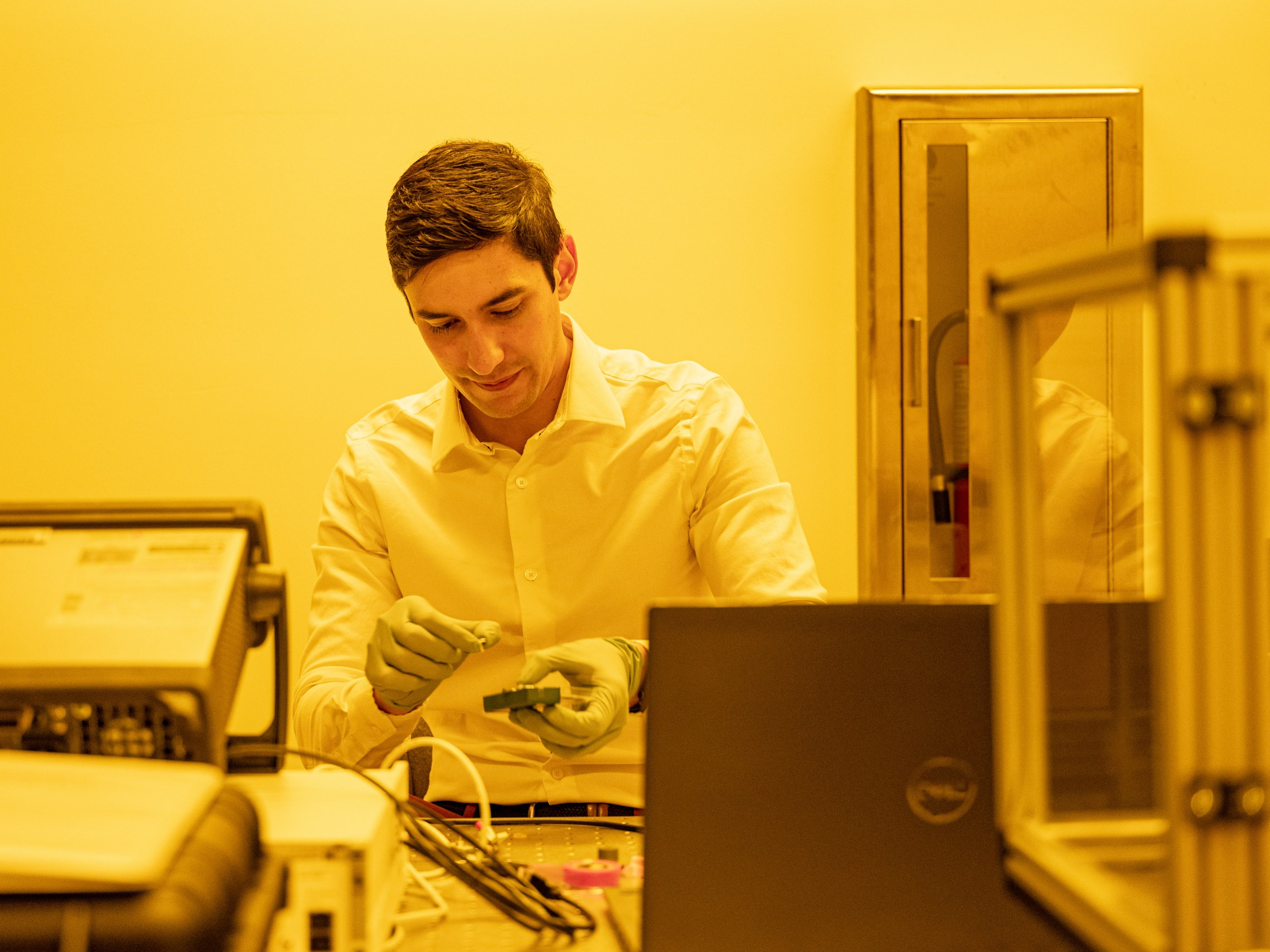As with most of Mueller’s projects, these are a physical manifestation of what can be done on a computer. But speaking more generally, she is always looking for a “wow” factor. “If you look at a project and are like, ‘Wow, I can really see how it changes the world,’ then even if you don’t understand it, you want to know more about it,” she says. “We try and select ideas that have a big vision behind them, that will first draw in people so they can enjoy it. Then we can talk about all the science and technical details.”
Micro-scale designs for nano scale products
Materials precisely designed at the nanoscale could have exciting applications—if they’re scaled up enough to make useful objects. Carlos Portela develops new materials and technologies to make them on a macroscale.
You can be sure that the ceramic mug you dropped on the floor will break. Carlos Portela’s video shows that when ceramic material becomes extremely thin, strange things happen. On his screen is a cube just 120 micrometers per side—eggshells are thick by comparison—made of a network of interconnected ceramic shells. Portela, a Brit (1961) and Alex (1949) d’Arbeloff Career Development Assistant Professor in Mechanical Engineering, points to one of the shell walls. “This is just 11 nanometers thick,” he says. That’s equivalent to about 30 atoms wide. “I’m going to compress [the cube] to half its height,” he adds. “What would you expect the ceramic to do?”
It would be reasonable to expect it to break into a hundred pieces. When a cube is compressed, it wrinkles and buckles like a sponge. Once the load has been removed, however, the cube returns to its original shape. “This is basically the same material as a coffee mug,” says Portela with a grin, gesturing to one on his desk. “And remarkably, we don’t even see any cracks.” It’s like an entirely new substance.

TOAN TRINH
In all of human history, the materials we’ve built with—rock, metal, ceramic, plastic, and foam—have had a relatively limited range of physical characteristics, Portela says. In order to achieve one desired property, many builders must compromise another. Hard materials aren’t very light, for instance, and light materials aren’t very stiff.
In the last decade however, engineers began designing at the microscale to create materials that combine desirable characteristics never before found together. These materials are a combination of well-known materials such as polymers and ceramics. But manipulating how they’re constructed at the nanoscale makes them behave completely differently from their familiar precursors. Portela believes that carbon materials can be designed to be strong, yet absorb energy. Metallic materials can also be engineered so they are superlight. Another material could be used to focus acoustic wave. New materials that are strong and lightweight, but also have the ability to focus acoustic waves could increase the range that rockets and airplanes can travel on a given quantity of fuel.
A silver airplane model in Portela’s window overlooking Killian Court attests to his early love for airplanes. He wanted to be an airplane pilot when he was a kid in Colombia. He studied aerospace engineering at the University of Southern California and got his pilot’s license, but as an international student, he had difficulty securing an internship at a major aircraft company. By then, he had become fascinated by the potential for nanoengineering and entered a PhD program in the topic at Caltech, where he studied with Julia Greer ’97, a pioneer in architected materials. Greer was using 3D printers calibrated to create nanoscale lattices, which could then be turned into materials with unique properties. “Her energy and passion for this was infectious,” Portela says. “It made me say, ‘I want to do this.’”
The techniques, while revolutionary, are limited. The printer may take weeks, or even months, to create a cube only a few microns thick. Designing and creating new objects is difficult. “Real-life applications require you to make a nanomaterial large enough to hold in your hands,” Portela says. That’s where his research comes in. He has been developing new techniques for making architected materials, some of which don’t involve a 3D printer at all.